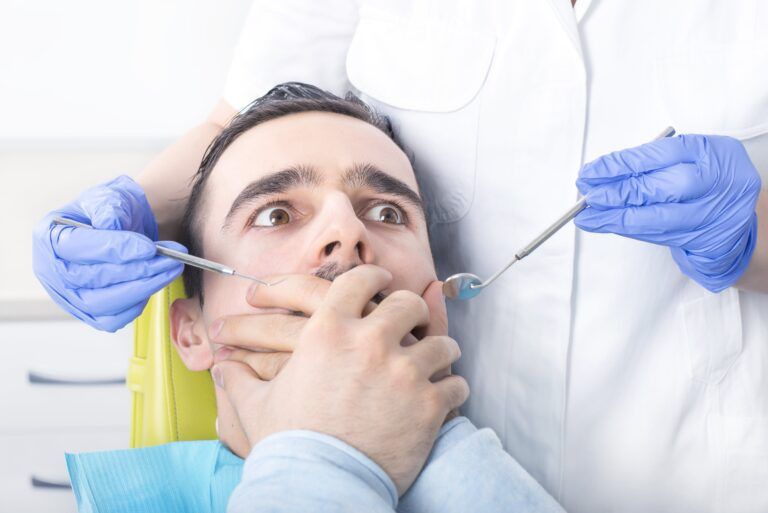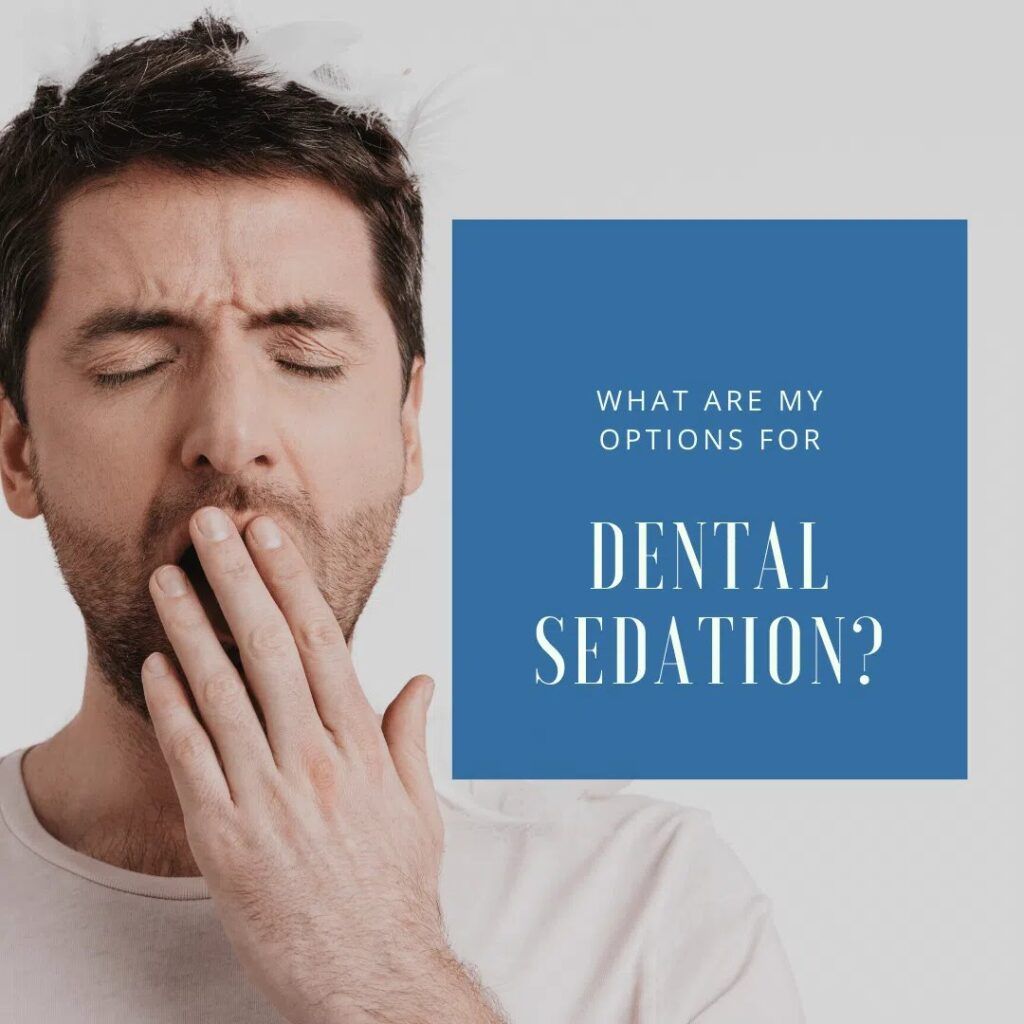Do you have dental anxiety? Are you considering dental implants but are worried about the pain? If so, you may be wondering about your options for dental sedation. Sedation dentistry can help you feel calm and relaxed during your dental treatment. In this blog post, we will discuss the many benefits of dental sedation, as well as who is an ideal candidate for it. We will also discuss the four main types of dental sedation: Nitrous Oxide, Oral Sedation, IV Sedation, and General Anesthesia. For each type of sedation, we will describe what it is, how it is given, what level of sedation it provides, and when it is generally used. Finally, we will help you decide which option is best for your needs.
What is sedation dentistry?
Sedation dentistry is designed to help people who have dental anxiety feel calm and relaxed during their dental treatment. There are many benefits of dental sedation, including:
- You will feel more relaxed during your dental treatment.
- It can help you overcome your fear of the dentist.
- It can make complex dental procedures more manageable.
- It can reduce your gag reflex.
- It can help you feel more comfortable during long dental procedures.
Who is an ideal candidate for dental sedation?

If you have dental anxiety, sedation dentistry may be a good option for you. Dental anxiety is a very common problem. In fact, it is estimated that 30-40% of people in the United States suffer from some form of dental anxiety. If you have dental anxiety, you may feel nervous or anxious about going to the dentist. You may even avoid going to the dentist altogether because of your fear. Dental anxiety can be caused by a variety of things, including a bad experience at the dentist, a fear of needles, or a fear of pain.
In addition to people with dental anxiety, people who have a fear of needles, an active gag reflex, or a fear of pain are all good candidates for dental sedation. If you have trouble sitting still or staying in one position for a long time, you may also be a good candidate for dental sedation.
However, dental sedation may not be ideal for people who are pregnant, have certain medical conditions, or are taking certain medications. If you are pregnant, you should talk to your dentist about whether dental sedation is right for you. If you have a medical condition or are taking medication that could affect your ability to safely undergo dental sedation, your dentist will likely advise against it. In some cases, you may qualify for some types of dental sedation, but not others.
Types of Dental Sedation
Now that we have discussed the many benefits of dental sedation, let’s talk about the different types of dental sedation. There are four main types of dental sedation: Nitrous Oxide, Oral Sedation, IV Sedation, and General Anesthesia.
Nitrous Oxide
Nitrous Oxide is a gas that you breathe in through a mask that fits over your nose. It is one of the most popular forms of dental sedation because it is very effective and has few side effects. Nitrous Oxide will make you feel relaxed and calm during your dental procedure. It will not put you to sleep, but you may feel like you are in a dream-like state. Nitrous Oxide is generally used for minor dental procedures, such as fillings or cleanings. Another main benefit of using nitrous oxide sedation is that the effects of the gas are short-term and only last as long as the gas is being inhaled. This means that most people are able to drive themselves home and continue a normal day after their appointment.
Oral Sedation
Oral sedation is a pill that you take by mouth. It is usually taken about an hour before your dental procedure. In some cases, it may also be taken the night before a procedure. Oral sedation will make you feel drowsy and relaxed during your dental procedure. You may even fall asleep during your procedure, however you will be able to be easily awoken. Oral sedation is generally used to manage more moderate dental anxiety or for more complex dental procedures, such as placing crowns or bridges.

IV Sedation
IV sedation is a form of sedation where medication is given through an IV in your arm. IV sedation will make you feel very relaxed and drowsy during your dental procedure. It can also put you into a twilight sleep and you may not even remember your procedure when it is over. IV sedation is generally used for more complex dental procedures, such as implants, extractions, or root canals.
General Anesthesia
General anesthesia is a form of sedation where you are put to sleep during your dental procedure. General anesthesia is generally used for very complex dental procedures, such as full mouth reconstructions. This form of sedation is not often used in dental practices, however some practices may provide this deep sedation method.
Which is Best?
Now that we have discussed the different types of dental sedation, let’s talk about how to know which option is best for you. The type of dental sedation that you choose will depend on a few factors, such as:
- The type of dental procedure that you are having
- Your level of anxiety
- Your medical history
- Your dentist’s recommendation
The goal of dental sedation is to provide the least amount of sedation necessary to obtain a relaxed emotional state. Oftentimes this means that If you are having a minor dental procedure, such as a filling or cleaning, Nitrous Oxide may be the best option for you. If you are having a more complex dental procedure, however, such as an implant or root canal, oral or IV sedation may be the best option for you. If you have a fear of needles, Oral Sedation or nitrous oxide may be the best option for you.
In Conclusion
In this blog post, we have discussed the many benefits of dental sedation. We also talked about the different types of dental sedation and how to know which one is best for you. Dental sedation is a great option for people who have dental anxiety or who are considering complex dental procedures. There are many benefits of dental sedation, as well as different types of dental sedation. If you are considering dental sedation, be sure to talk to your dentist about which option is best for you and your procedure. Thanks for reading!

